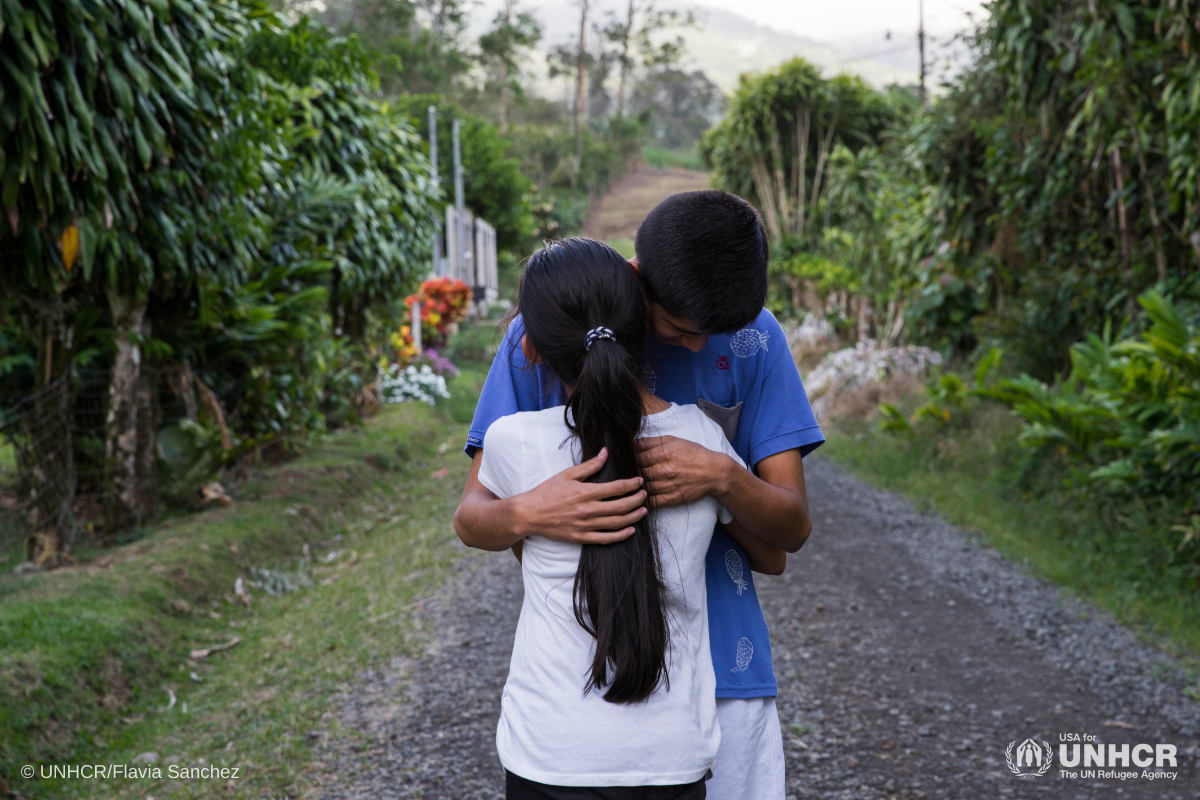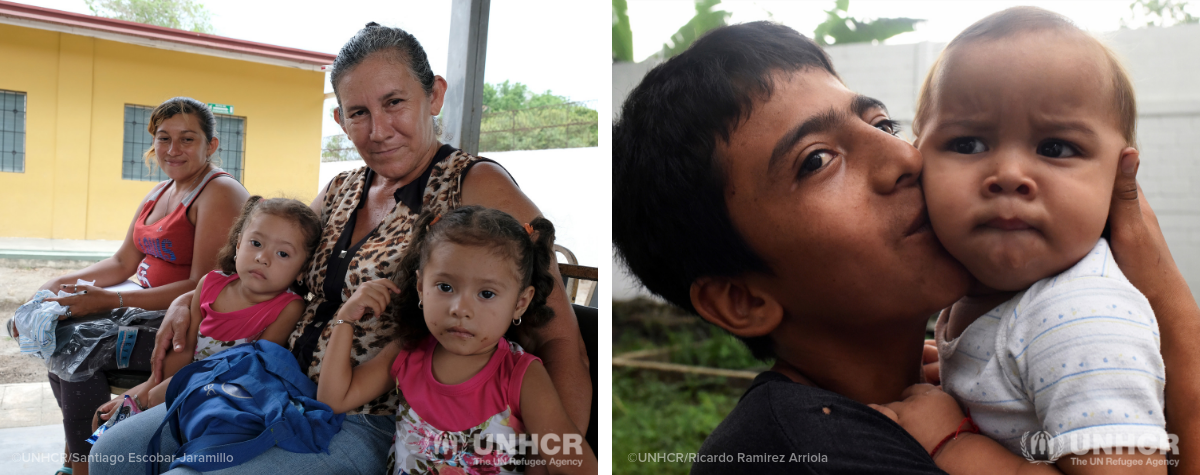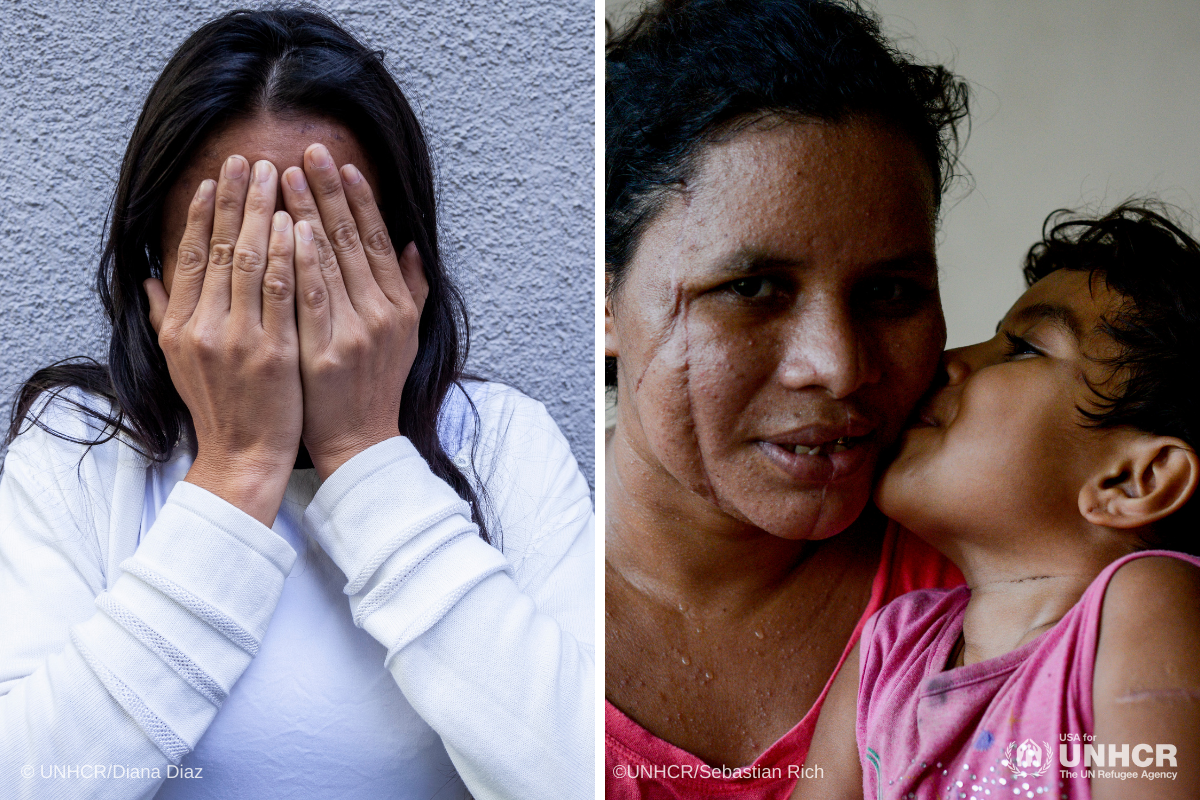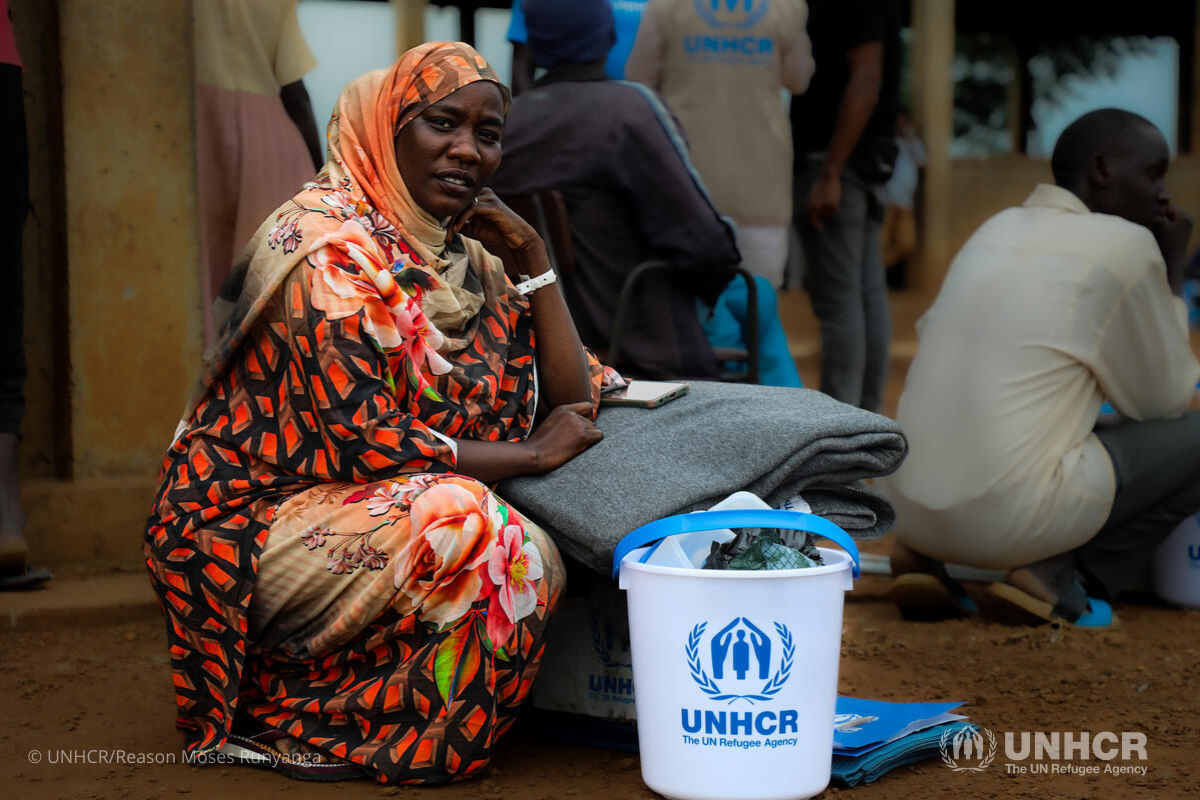Central America Displacement Crisis Explained
 Gang violence, extortion, persecution, poverty and food insecurity continue to force hundreds of thousands of people from Central America to flee their homes in search of safety. By the end of 2022, the number of asylum-seekers and refugees worldwide from El Salvador, Guatemala and Honduras reached 665,200 and more than 318,600 have been internally displaced.
Gang violence, extortion, persecution, poverty and food insecurity continue to force hundreds of thousands of people from Central America to flee their homes in search of safety. By the end of 2022, the number of asylum-seekers and refugees worldwide from El Salvador, Guatemala and Honduras reached 665,200 and more than 318,600 have been internally displaced.
Here’s What You Need to Know:
1. Why are people fleeing El Salvador, Guatemala and Honduras?
2. Which countries are welcoming refugees from El Salvador, Guatemala and Honduras?
3. How are children, women and LGBTI people impacted by this crisis?
4. How has the COVID-19 pandemic affected the crisis?
5. What is UNHCR doing to help people fleeing El Salvador, Guatemala and Honduras?
Why are people fleeing El Salvador, Guatemala and Honduras?
Widespread violence and organized crime, compounded with the region’s socio-economic instability and poverty, are the main drivers for people to flee. The increasing presence of drug cartels and gangs -called maras- threatens the lives of thousands of people in the region who are forced to flee their homes to ensure their own safety and protect their families from violence, extortion, forced gang recruitment and sexual and gender-based violence (SGBV). Those who flee - many of whom are women and children - undertake perilous journeys, just to find a safe place to live.
Since 2018, political turmoil and persecution has also forced more than 200,000 people to flee persecution and human rights abuses, the vast majority – 150,000 — into neighboring Costa Rica.
Which countries are welcoming refugees from El Salvador, Guatemala and Honduras?
Most of the people fleeing violence in El Salvador, Guatemala and Honduras seek refuge in neighboring countries, such as Panama, Costa Rica, Belize and Mexico. In 2017, these countries - along with Guatemala and Honduras – implemented an integrated Action Plan (MIRPS) to strengthen protection and promote durable solutions for those forcibly displaced across the region. Yet the growing numbers of people seeking safety in recent years has overstretched the capacities of host countries and strained services that also serve local communities.
How are children, women and LGBTI people impacted by this crisis?
Armed gangs operate with near impunity in certain parts of the region, often targeting youth and children who refuse to join their gangs or participate in criminal activity. Their families are not safe either as, in many cases, they are attacked or forced to pay exorbitant “war taxes” as a result of revenge or retaliation.
Women and girls are victims of SGBV at incredibly high rates. Tens of thousands have fled El Salvador, Guatemala and Honduras in order to escape domestic violence, rape and sexual assault.
Members of the LGBTI community are also subject of severe discrimination, violence and persecution because of their sexual orientation and gender identity. They often face barriers to basic services - such as health, education and employment - and often lack legal protection. As of November 2019, only half of the displaced LGBTI people in El Salvador had studied beyond primary school.
How has the COVID-19 pandemic affected the crisis?
The coronavirus pandemic has exacerbated the risks of thousands of people in El Salvador, Guatemala and Honduras. Lockdowns and restrictions of movement allow criminal gangs to strengthen control over communities as it is harder for people that need to flee to find safe haven, increasing the risk of extortion, drug trafficking and violence across the region.
These risks are in addition to the socioeconomic impact of the pandemic, which has caused many displaced and vulnerable people to lose their livelihoods. In El Salvador for example, poverty levels increased to 41 percent.

What is UNHCR doing to help people fleeing El Salvador, Guatemala and Honduras?
The UN Refugee Agency is working closely with the seven governments leading MIRPS to strengthen protection alternatives and find solutions for refugees and other victims of forced displacement. Some of UNHCR’s activities in the region include: supporting shelters and safe spaces across Central America and Mexico to assist people on the move; helping host countries establish efficient refugee status determination procedures; providing livelihood and educational training to empower women, children, LGBTI people and other vulnerable groups; providing aid, cash grants, psychological support and legal assistance to victims of SGBV and launching campaigns to promote peaceful coexistence with host communities.
During the pandemic, UNHCR has also been working across Central America to provide humanitarian assistance and to support government responses to COVID-19. UNHCR has scaled up its cash assistance programs to mitigate the economic impact in displaced communities and is distributing food and cleaning items to help curb the spread of the disease.

People fleeing El Salvador, Guatemala and Honduras need your help…
Monthly giving is the most convenient, effective and efficient way you can help people fleeing violence and persecution. Start making a lifesaving difference today. Please become USA for UNHCR’s newest monthly donor.





